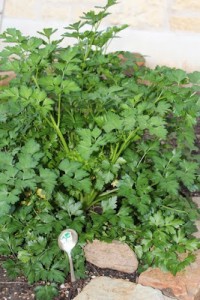
They thrive in dry environments, give mild flavor to meats
 In the last few weeks, I’ve written about growing herbs in your garden or in containers, and little about each herb and its growing needs and uses. Today, I write about more herbs, starting with the letters in the rest of the alphabet. If you missed A-L, visit Grow herbs in containers all year long.
In the last few weeks, I’ve written about growing herbs in your garden or in containers, and little about each herb and its growing needs and uses. Today, I write about more herbs, starting with the letters in the rest of the alphabet. If you missed A-L, visit Grow herbs in containers all year long.
Marjoram
Though a tender perennial in the oregano family, marjoram is very different than oregano. It has a much milder flavor, and is used to add depth to meat and pork dishes without overpowering them with the Greek/Italian flavor of oregano. It is also used in quiches or frittatas, stuffings, peppers and sausage. Unable to take our full sun, give it some afternoon shade. Indoors, it will need good light to survive the winter inside and will grow best in a bright window. It can go back outside when the chance of frost has passed in the spring – typically early to mid-March.
Mint
Mint likes the sun, but can struggle in the harshest summer heat. It needs plenty of water. It is also frost tender. If you are planting it in the ground, keep it separated from other herbs and mints, as its strong flavor can overtake other herbs. It can spread quickly, so consider that as well – my experience required the purchase of a machete to keep it under control! Personally, I grow mint in pots. Because it is a fast grower, it will need a larger pot to allow the roots to grow. Mint is used in most of the world’s cuisines and there are hundreds of varieties (did you know that lantana is in the mint family? But don’t eat it; its leaves and berries are poisonous.) But you can grow and harvest edible varieties like spearmint, peppermint, chocolate mint, apple mint, orange mint and pineapple mint. Mint is easiest to grow as a transplant.
Parsley
Possibly the most common herb, there’s much more to parsley than meets the eye. There are two types of parsley – curly and flat-leaf. In addition to a pretty garnish on your plate, parsley adds seasoning to countless dishes and is its own condiment when combined with pine nuts, oil and Parmesan to make pesto. Parsley also has nutritional value — it contains flavonoids that act as antioxidants and is a source of vitamins A, (beta carotene), B (folic acid) and C. Even the ancient Greeks and Romans used it for medicinal purposes. Parsley should get 6 to 8 hours of sun a day and it likes well-drained soil. A biennial, parsley will usually go through the winter, flower and go to seed and then die. You can wait for the seeds that dropped to germinate the next year or you can also buy inexpensive new transplants each spring.
Rosemary
Rosemary means “dew of the sea” and makes a beautiful ornamental shrub anywhere in your landscape. It can grow as large as 4 feet wide and 4-5 feet tall, so make sure you give it plenty of room to grow. It’s usually cold hardy in Central Texas, likes full sun, is relatively drought tolerant and likes rocky soil. It does not like wet feet and can struggle in those rare instances that we get a lengthy rainy spell. Rosemary plants are best started from transplants as they have a low germination rate. It is often used to season meats and potatoes and to flavor oils. Woody rosemary stems can be used as skewers for grilling.
Sage
Like rosemary, sage is another Mediterranean herb that likes a dry environment. With a robust and distinctive flavor, sage is frequently used in stuffings, sausages, poultry, roasts and stews. It is frost tolerant but you can enjoy growing sage on your windowsill with plenty of light and good drainage. You can also steep sage to make an excellent gargle for the sore throats of coughs and colds.
Thyme
Tough as they come, thyme is compact and low-growing. It gets about a foot tall, though many varieties are even used as ground cover. It is semi-drought tolerant and is sometimes evergreen in a mild winter. It is often paired with lamb, beef and pork dishes. There are more than 100 different varieties of thyme, and while some have less flavor and are used primarily as ornamentals, they are all, in fact, edible. It can also be used as an insect repellant by steeping the herb in boiling water and putting it in a spray bottle to use in outdoor living areas.

